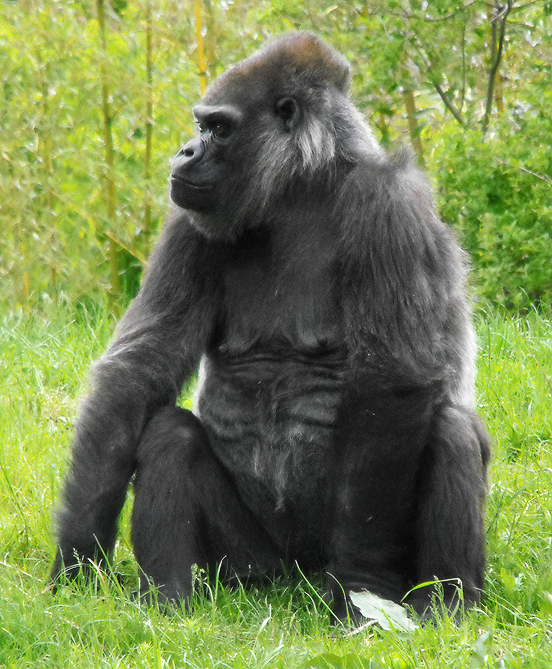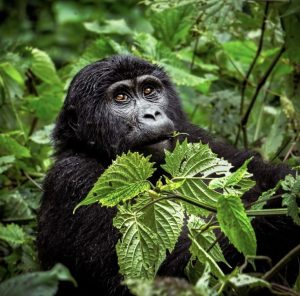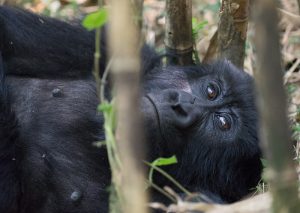Choosing Between Bwindi and Volcanoes National Park for Gorilla Trekking – Gorilla Trekking in Bwindi vs Volcanoes National Park
Gorilla Trekking in Bwindi vs Volcanoes National Park — Are you torn between Bwindi Impenetrable Forest National Park in Uganda and Volcanoes National Park in Rwanda for your gorilla trekking adventure? Let’s compare the two to help you make an informed decision based on our expertise. Choosing Between Bwindi and Volcanoes National Park
Vegetation and Trekking Experience:
Volcanoes National Park is characterized by Virunga hills with predominantly bamboo vegetation, offering relatively clear views of mountain gorillas. In contrast, Bwindi Impenetrable Forest National Park boasts a tropical rainforest environment with diverse flora. While gorillas in Volcanoes National Park may be easier to spot due to the vegetation, Bwindi provides a more immersive experience in a dense forest setting.
Accessibility:
Volcanoes National Park holds an advantage in terms of accessibility, being just a 2-3 hours’ drive from Kigali, Rwanda’s capital. Gorillas here can be reached with a short drive, making day trips feasible. Bwindi, although historically challenging to access, now offers more convenient routes via Kigali, reducing travel time to 4-5 hours. This makes trekking in Bwindi more accessible, even enticing Rwanda-based tour operators to promote it.
Lodging Options:
Both parks offer a range of accommodations, from budget to luxury lodges. Volcanoes National Park particularly shines in luxury offerings, with lodges like Bisate Lodge and Singita Kwitonda Lodge providing world-class amenities. Bwindi, on the other hand, caters well to budget travelers with numerous affordable options ranging from $30 to $100 per night.
Gorilla Families:
Bwindi boasts a larger number of habituated gorilla families open for trekking compared to Volcanoes National Park. With 16 habituated gorilla groups, Bwindi offers 128 gorilla permits daily, providing more flexibility, especially during peak seasons. Volcanoes National Park, with 12 gorilla families, offers 96 permits daily, making it slightly more competitive to secure permits during peak times.
Overall Trekking Experience:
Both parks offer equally exceptional gorilla trekking experiences, with a high likelihood of encountering these majestic creatures in their natural habitat. The chance of seeing gorillas in either park is around 98%. However, Bwindi provides an additional option for an extended encounter through Gorilla Habituation Experience. This unique opportunity allows for a 4-hour encounter with semi-habituated gorillas, providing a deeper understanding of their behavior.
When it comes to affordability:
Bwindi Impenetrable Forest National Park in Uganda emerges as the more budget-friendly option compared to Volcanoes National Park in Rwanda. This price disparity reflects the differing policies of the two countries. While Rwanda aims to position itself as a luxury destination, Uganda emphasizes affordability. Despite the cost difference, the experience and duration spent with the gorillas remain the same. In fact, opting for Uganda’s gorilla habituation experience at the same price of USD 1500 allows visitors to spend up to four hours with the mountain gorillas, compared to just one hour in Rwanda’s Volcanoes National Park.
Cost of Gorilla Permits:
In Uganda, gorilla permits cost $700 per person per trek for foreign non-residents, $600 for residents, and $70 for East African citizens. This permits a one-hour encounter with mountain gorillas in Bwindi Impenetrable Forest National Park. In Rwanda, gorilla permits are priced at $1500 per person per trek for foreign non-residents, $500 for foreign residents, and $200 for East African citizens, also allowing a one-hour encounter with mountain gorillas in Volcanoes National Park.
Trekking Distance:
The distance walked during gorilla trekking depends on the allocated gorilla family and the individual’s preference and physical fitness. Both parks, Volcanoes National Park and Bwindi Impenetrable National Park, allocate gorilla families accordingly. Visitors can express their trekking preferences on the day of the trek. While efforts are made to allocate families requiring shorter walks, the behavior of the gorillas may influence the experience. For instance, if the gorillas move further during the trek, visitors may need to cover a longer distance.
Best Time for Gorilla Trekking:
Both Volcanoes National Park and Bwindi Impenetrable National Park are open for gorilla trekking throughout the year. However, the forest’s tropical rainforest climate means rainfall can occur at any time. The best months for tracking gorillas, with lower rainfall and less slippery conditions, are June to August and December to February. Traveling during March to May and November may involve higher rainfall, but some lodges offer discounts on accommodation during these periods.
Ultimately, whether you choose Bwindi or Volcanoes National Park, you’re assured of an unforgettable gorilla trekking adventure. Feel free to reach out to us for more details and assistance in planning your trip.




